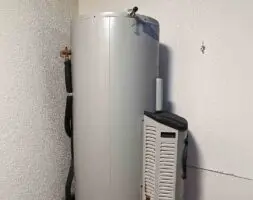Four more prototypes are now out of the lab and onto the US Department of Energy’s list of heat pumps that can operate in sub-zero conditions without resorting to gas backup.
The US has been running its Residential Cold Climate Heat Pump (CCHP) Technology Challenge since 2021, and the number of heat pump makers with prototypes on the list now numbers eight.
The conditions for the prototypes are that they have to deliver 100 per cent heating capacity without the use of extra heating sources and high efficiencies at 5° fahrenheit (-15° celsius).
Bosch, Daikin, Midea, and Johnson Controls join Lennox International, Carrier, Trane Technologies, and Rheem in the next phase of the challenge, where their prototypes will be installed at some 23 locations in the US and Canada and monitored over the next year.
The program has pushed companies into markets they may not have originally designed for.
For example, Bosch’s new IDS Ultra heat pump is the company’s first air-to-air heat pump designed specifically for colder climates.
Bosch says it can keep operating in temperatures down to -15°C and still function at -25°C.
The heat pump challenge to commercialise devices that work in cold locations is a key part of the push to lower energy bills from space heating in the US, said US secretary of energy Jennifer Granholm.
“By supporting industry advancements, DOE’s Cold-Climate Heat Pump Challenge is helping get cost-effective clean energy technology into homes across America—keeping families warm during the coldest months and saving them money,” she said.
So simple, so cheap
Heat pumps are incredibly efficient in their energy use for converting heat to cold and vice versa.
A guide by Australian energy company AGL says the best can heat a room at 600 per cent efficiency compared to gas heaters at between 50-95 per cent efficiency.
A New South Wales water heating guide says for every gigajoule (GJ) of electricity used a heat pump can generate 4 GJ of heat. Compare that to a gas boiler which needs 1.18 GJ of energy to create 1 GJ of heat.
Heat pumps work by using a compressor and a phase-change refrigerant to absorb heat from the environment, then concentrate it and blow it inside. When heating, the heat energy absorbed from the outside changes the refrigerant from a liquid to a gas, and when cooling that process reverses.
There is always some heat energy in the environment to draw on until the temperature reaches absolute zero, 273°C.
Cold climate heat pumps are the new big thing
But while heat pumps do work in cold weather, they’ve been at a disadvantage in colder climes as they are slower to push out heat when compared to gas boilers.
In Australia – a country which is very new to the concept of using heat pumps – new industrial systems are being installed with gas boiler backups, just in case of very cold days.
It’s an unnecessary addition, however, in the eyes of Australian Alliance for Energy Productivity CEO Jarrod Leak, who says there are plenty of models available in Australia now that work in the country’s coldest alpine areas.
“In Australia [the problem of heat pumps that work in cold climates] is already solved! And I’d question the extent of the problem in colder parts of the world. Norway was just recently announced as having the highest penetration of heat pumps in the world, with six out of ten households having heat pumps installed,” he told RenewEconomy.
“There are plenty of heat pumps operating in Thredbo and Perisher, mainly for domestic hot water. However, I am not sure of any sites in our alpine regions that are fully electrified.”
In countries such as German, or those in Scandinavia, whole towns have long been heated with giant industrial heat pumps.
But with the advent of environmental incentives such as the mammoth US Inflation Reduction Act, the race is on to build designs specifically for cold climates.
A subsidiary of Nasdaq-listed Worksport said this week it’s now commercialising a residential heat pump that works in temperatures as low as -35ºC.
The company says its design will “redefine the boundaries of heating technology without the use of supplemental heating coils” as it will be able to operate in the harshest of northern hemisphere winters.
“In our Toronto R&D facility, our cutting-edge ‘Arctic Chamber’ created a simulated environment of extreme cold, and the Heat Pump demonstrated its unparalleled capability to maintain a comfortable temperature, even at a staggering -35ºC (-31ºF). This extraordinary feat was accomplished without reliance on typical auxiliary heating coils, a breakthrough that we believe sets the Terravis Heat Pump apart in the large worldwide heating solutions market,” said Lorenzo Rossi, CEO of the subsidiary Terravis.










